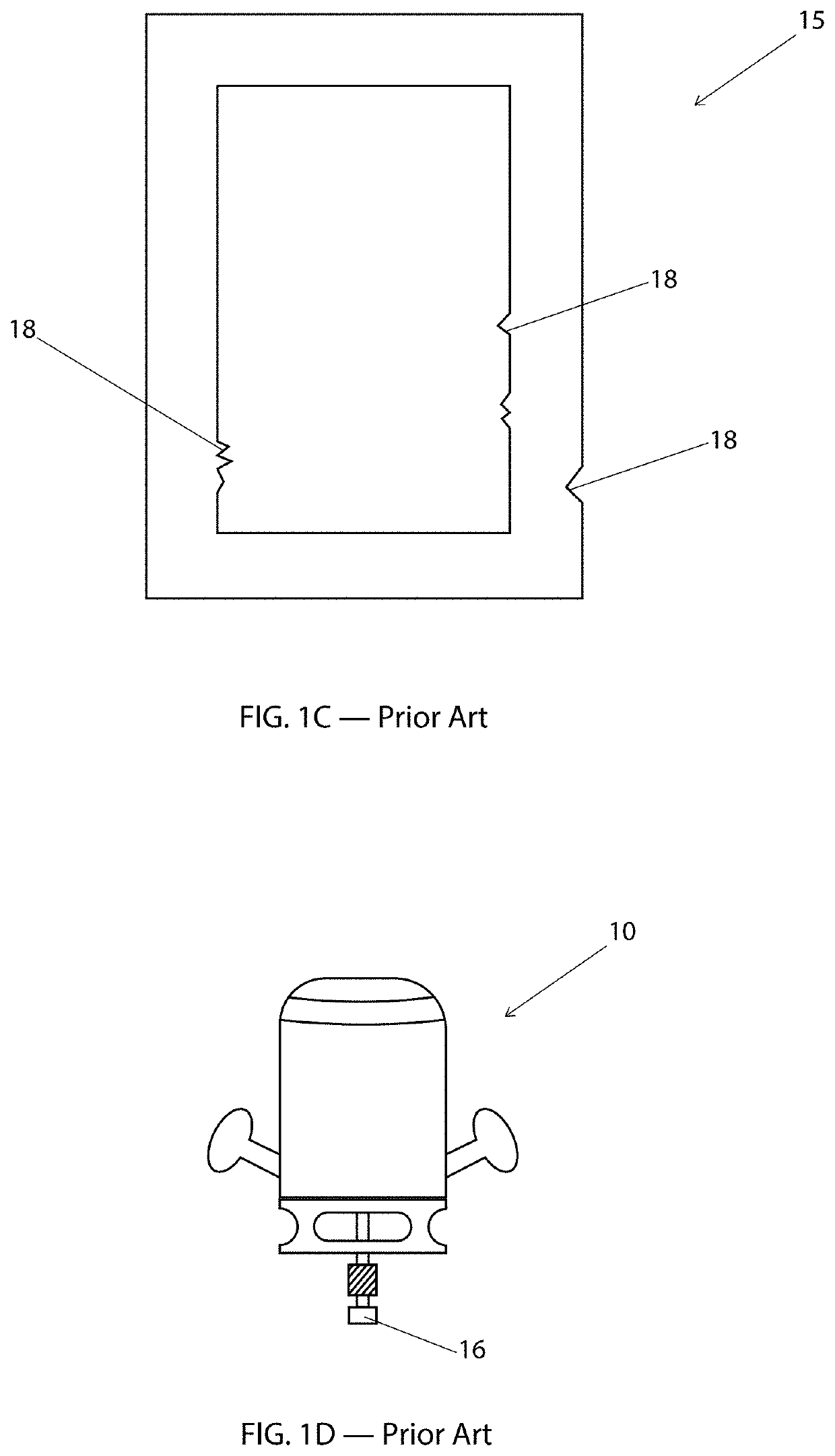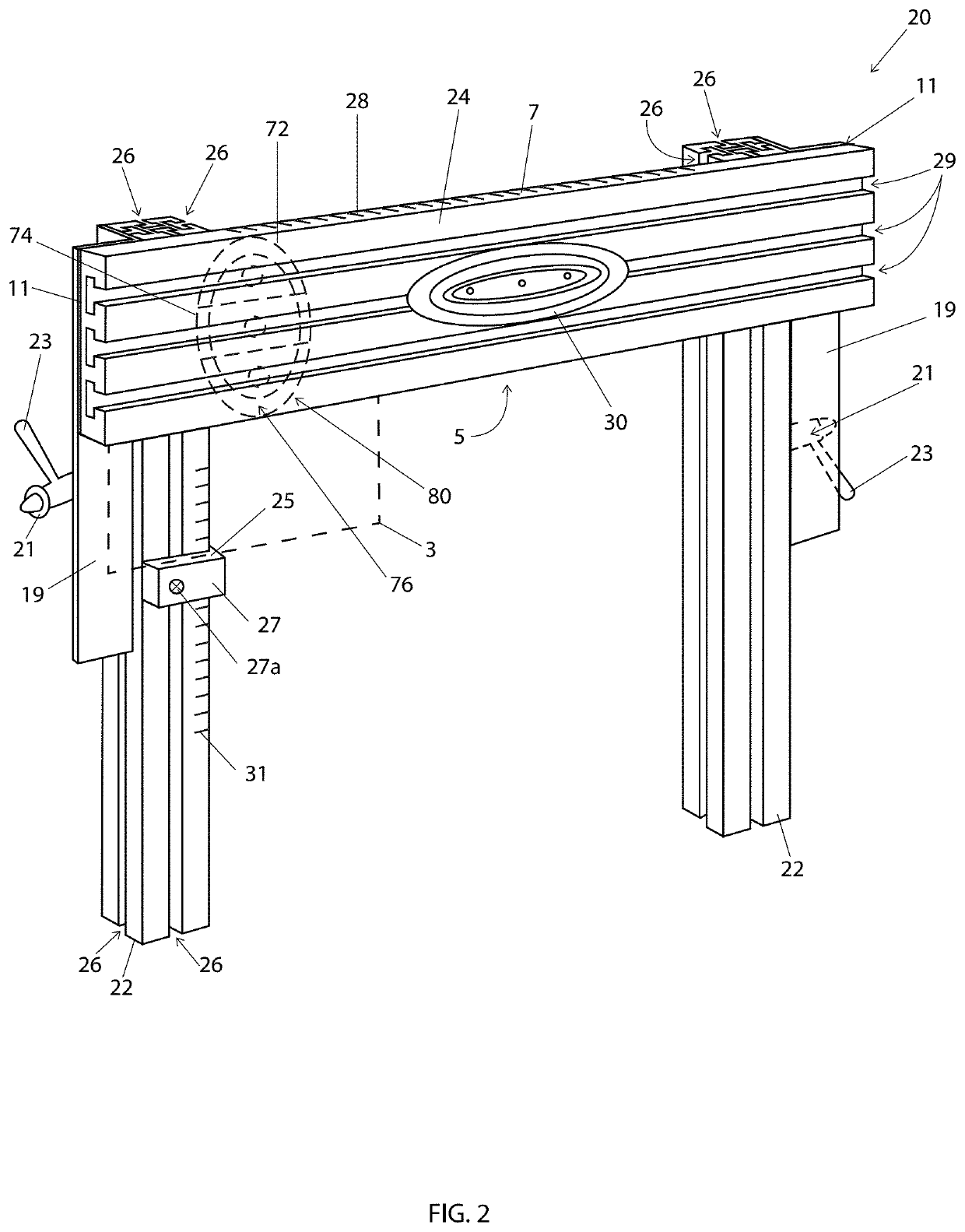Positioning and centering device, system, and method for use with a template guidance system for a pantograph router
a template guidance and pantograph router technology, applied in special profiling/shaping machines, profiling/shaping machines, metal working apparatuses, etc., can solve the problems of difficult to precisely control using conventional, manual operation, methods and commonly available jigs and templates, and allowed the degree of fine adjustment, etc., to achieve clean and more precise cuts, reduce the scale of cutting movements, and improve the effect of precision
- Summary
- Abstract
- Description
- Claims
- Application Information
AI Technical Summary
Benefits of technology
Problems solved by technology
Method used
Image
Examples
Embodiment Construction
[0144]Referring specifically to FIGS. 2 and 3A-E, a template holder system 20 in accordance with one or more aspects of the disclosure preferably comprises a plurality of stands, or posts, 22 (preferably there are provided two such posts), and preferably a single cross member 24 interconnecting the two posts. The template holder system 20 may be comprised of a single post 22 and cross member 24, or more posts 22 may be employed as well, without departing from the true scope and spirit of the disclosure and per the claims hereof. However, it will be appreciated by those skilled in the art that two such posts is preferable from the standpoint of simplicity of use, rigidity and sturdiness of the resulting template guide system 20.
[0145]Each of the posts 22 of the template holder system 20 preferably has key slots, or grooves, 26 therein for facilitating alignment of the cross-member 24 thereon, for facilitating the adjustment of the template holder for use as described further hereafte...
PUM
 Login to View More
Login to View More Abstract
Description
Claims
Application Information
 Login to View More
Login to View More - R&D
- Intellectual Property
- Life Sciences
- Materials
- Tech Scout
- Unparalleled Data Quality
- Higher Quality Content
- 60% Fewer Hallucinations
Browse by: Latest US Patents, China's latest patents, Technical Efficacy Thesaurus, Application Domain, Technology Topic, Popular Technical Reports.
© 2025 PatSnap. All rights reserved.Legal|Privacy policy|Modern Slavery Act Transparency Statement|Sitemap|About US| Contact US: help@patsnap.com



